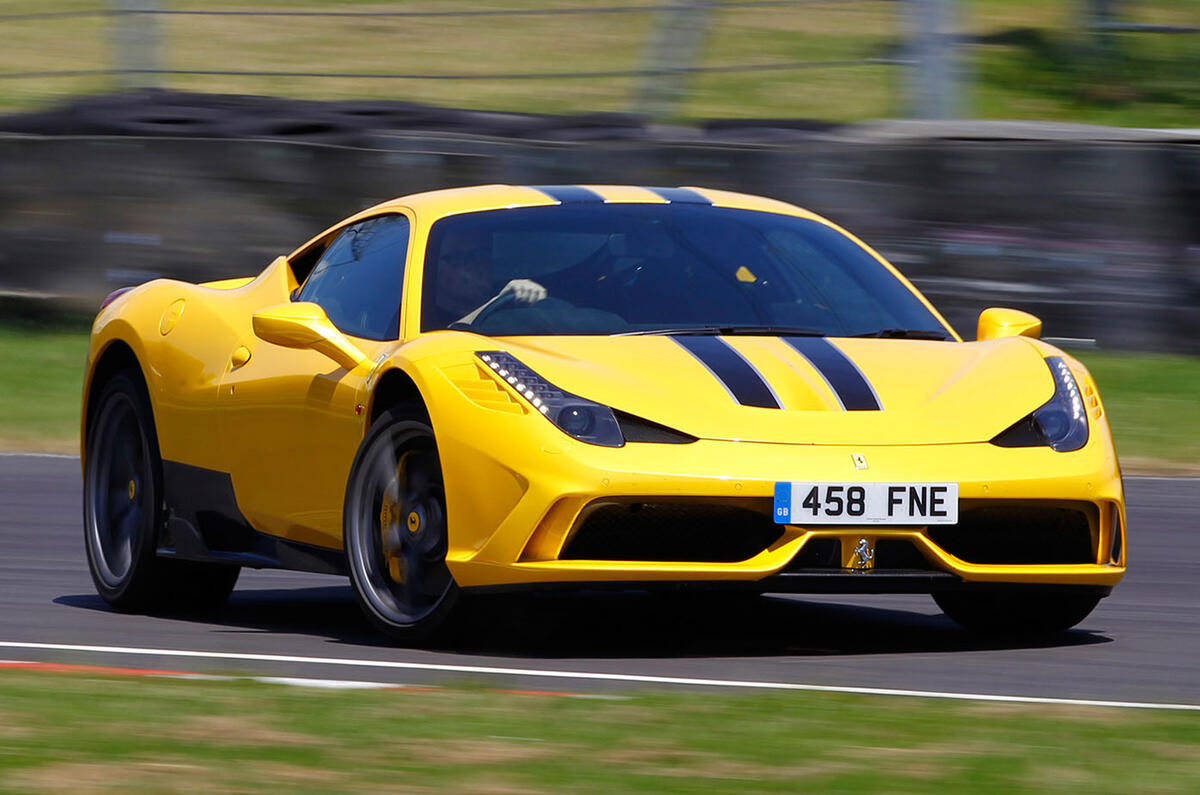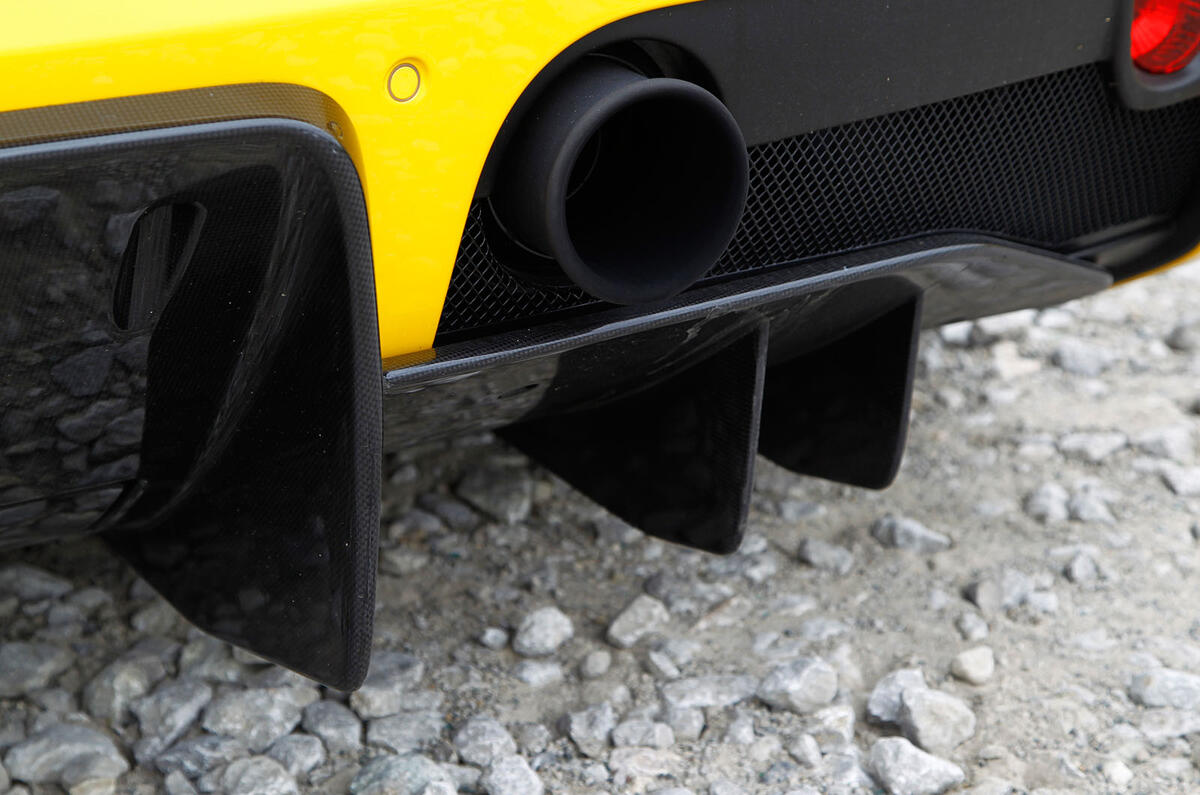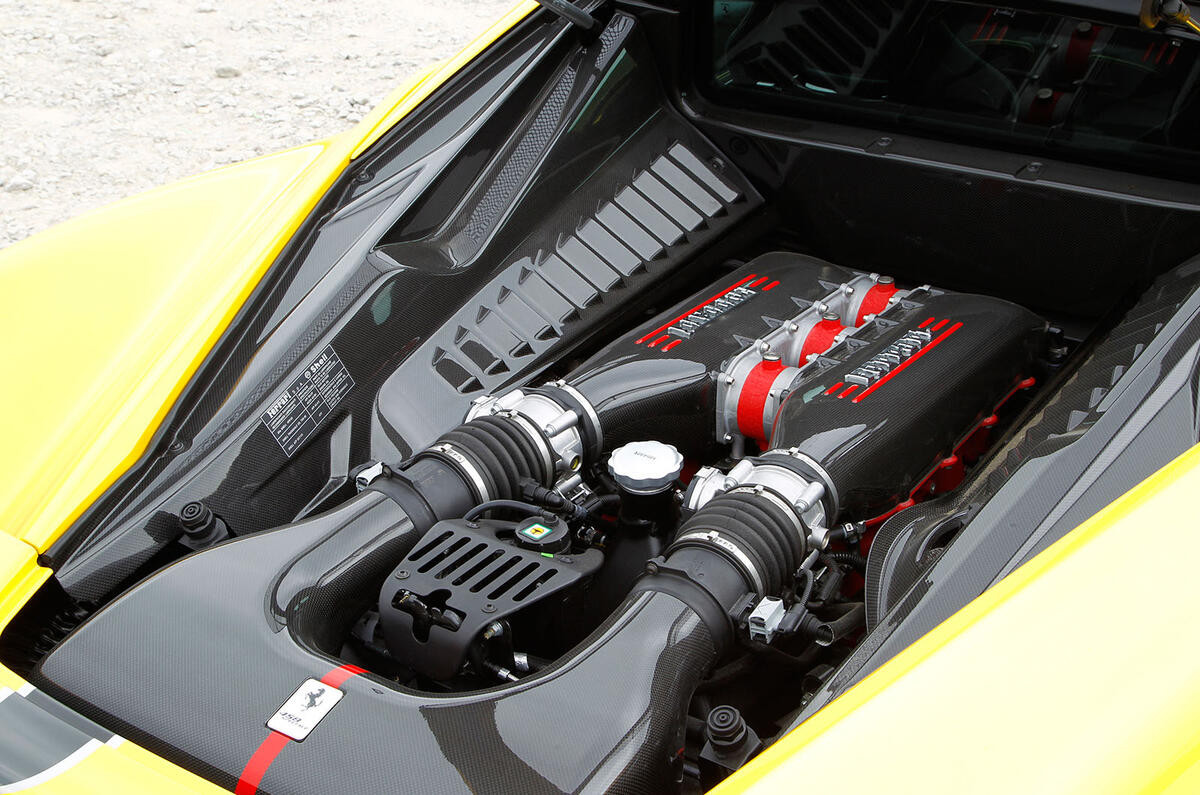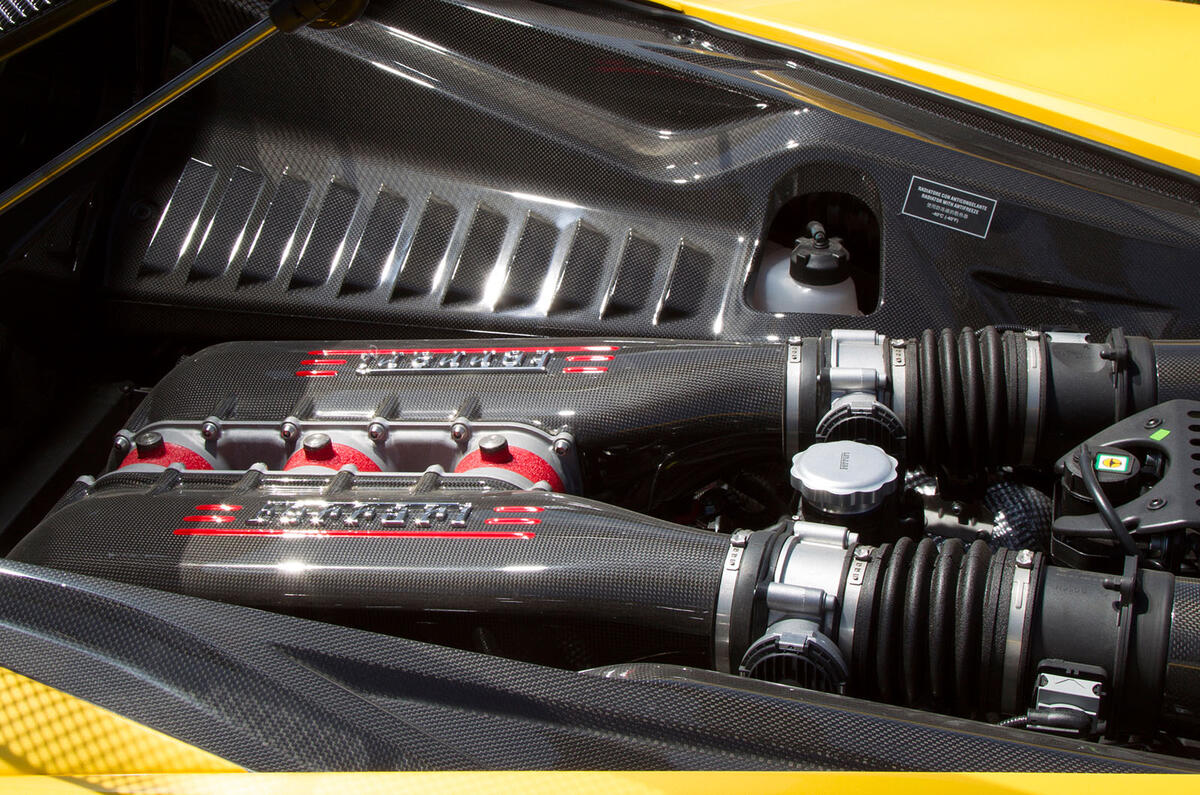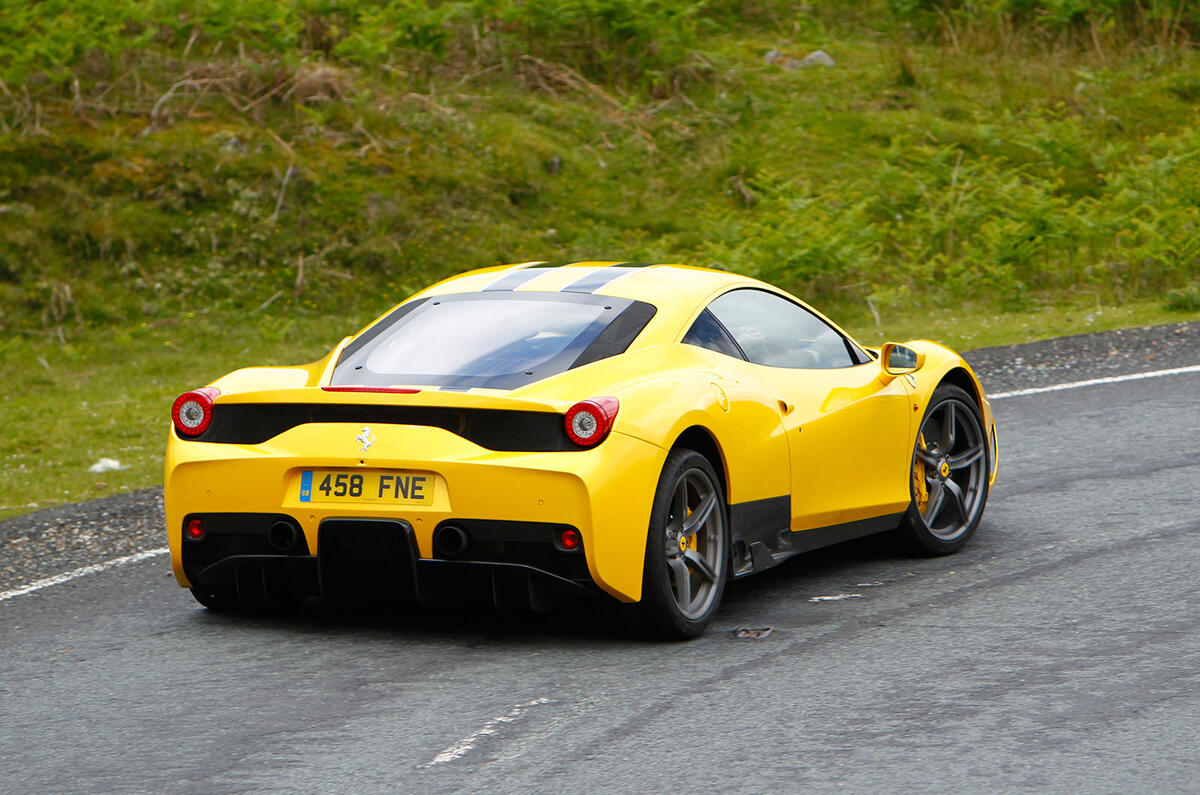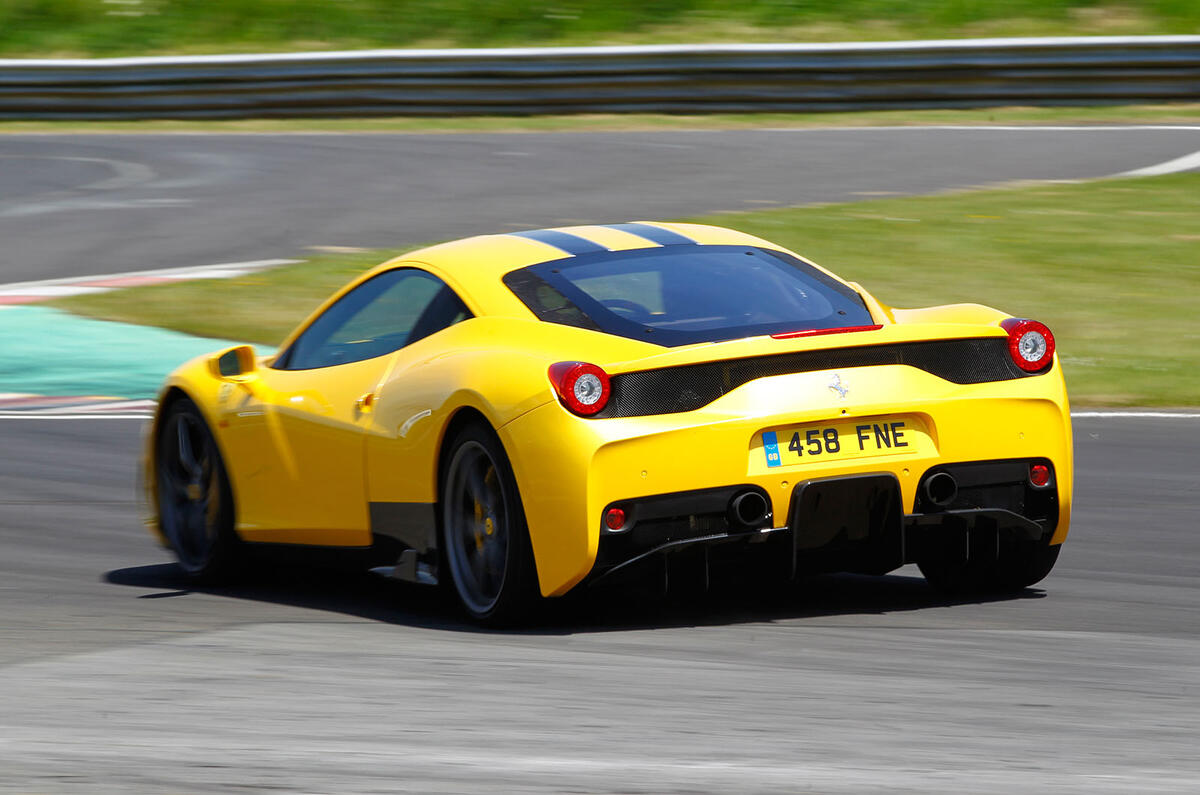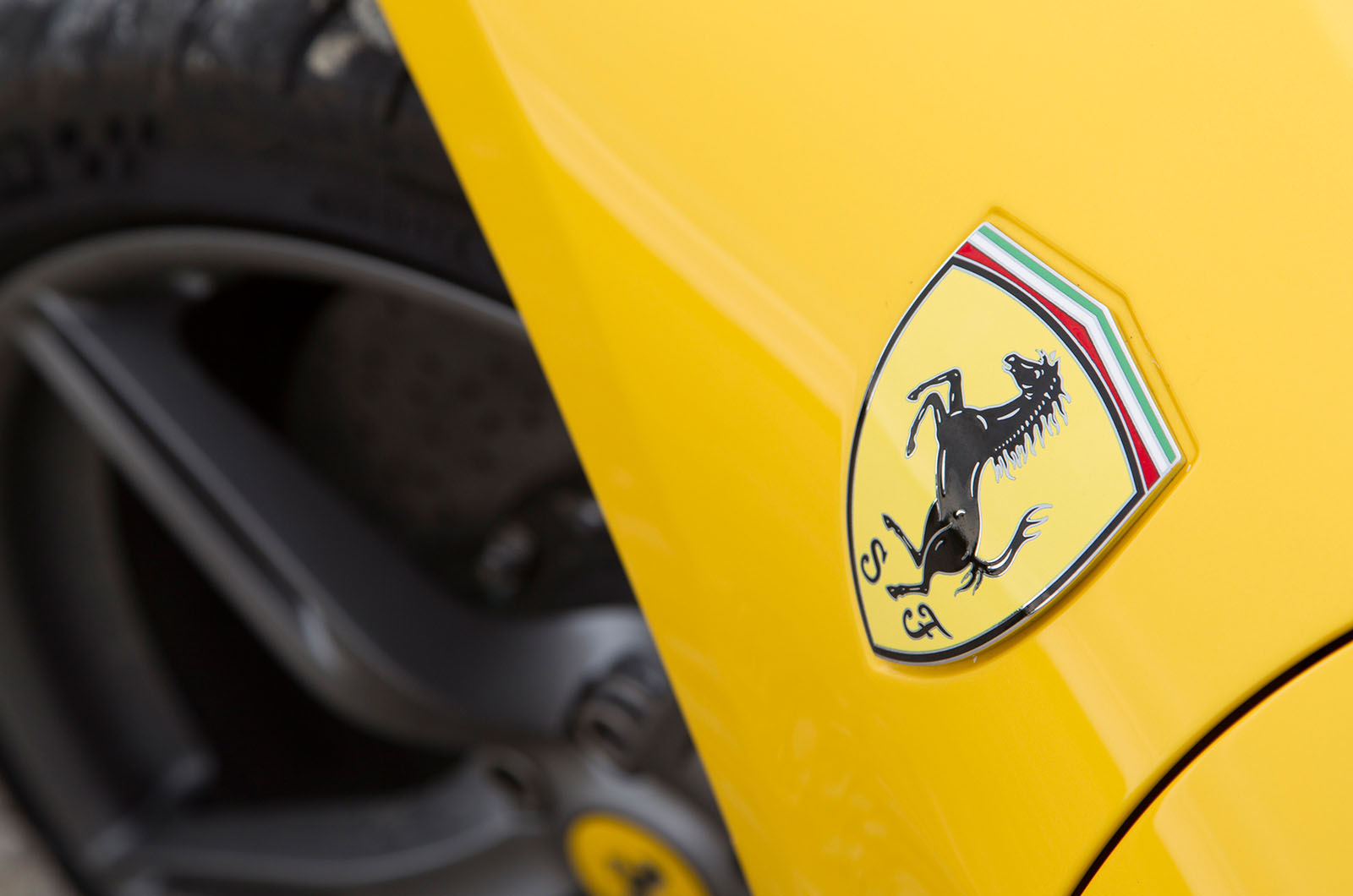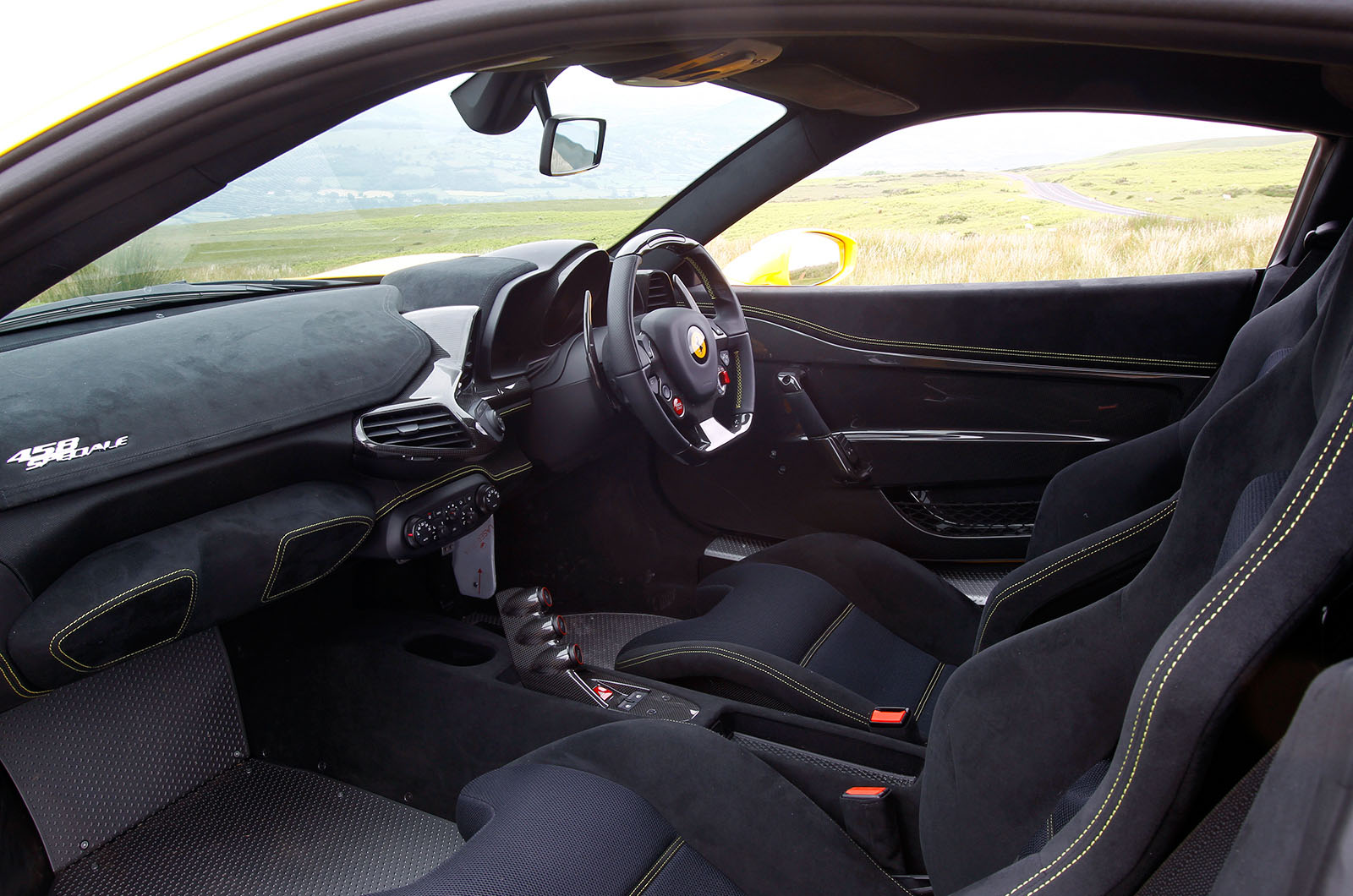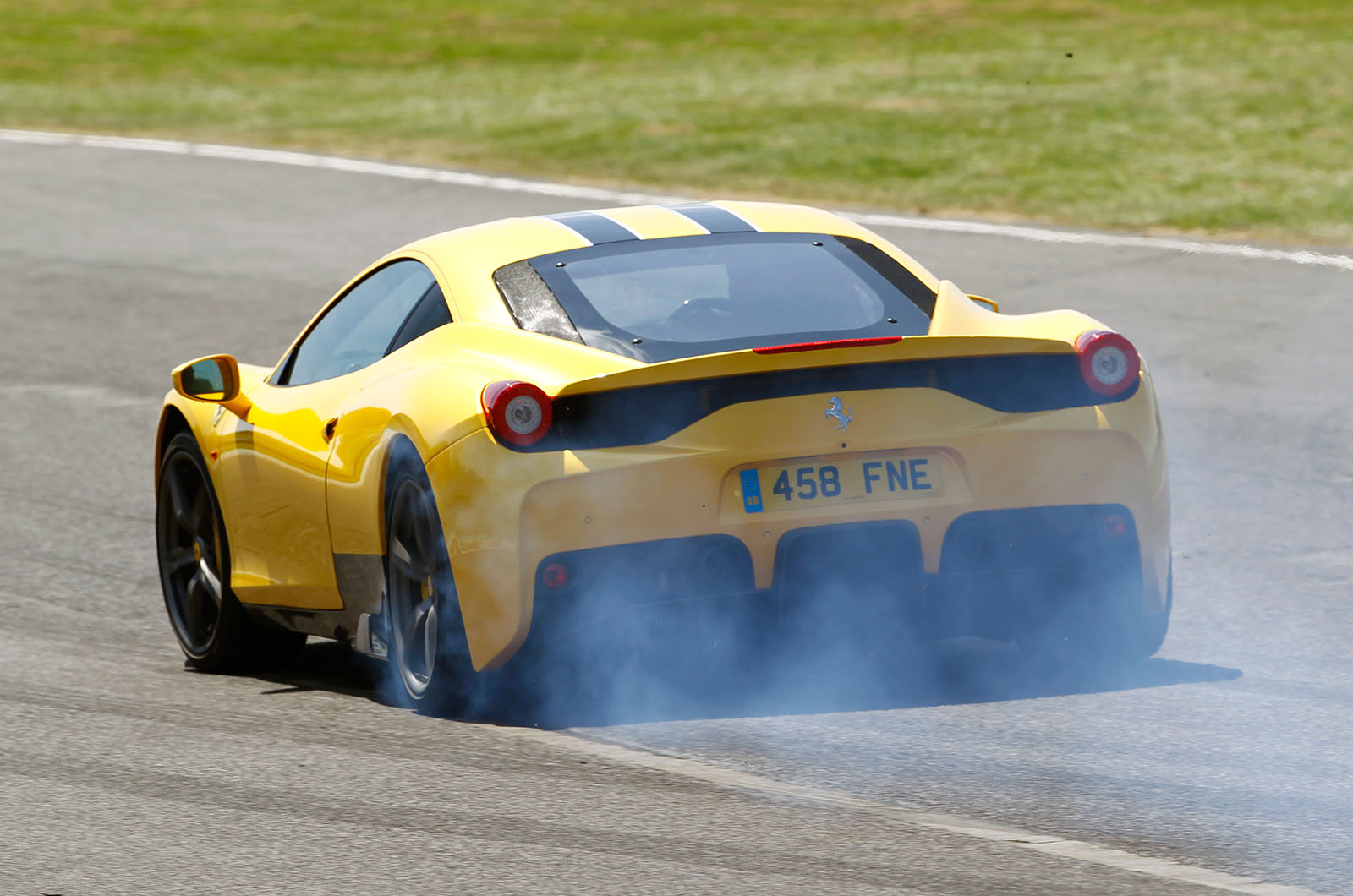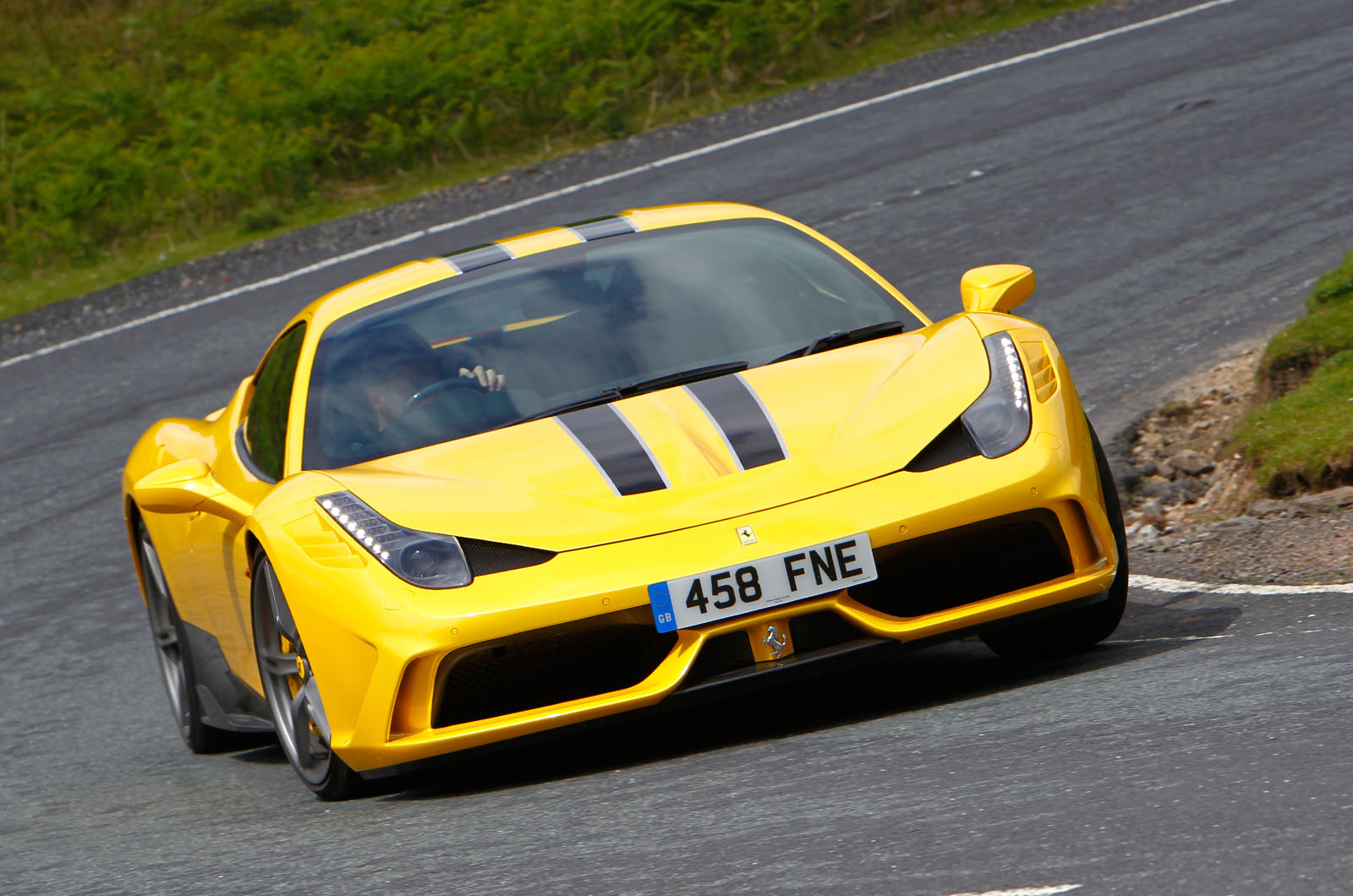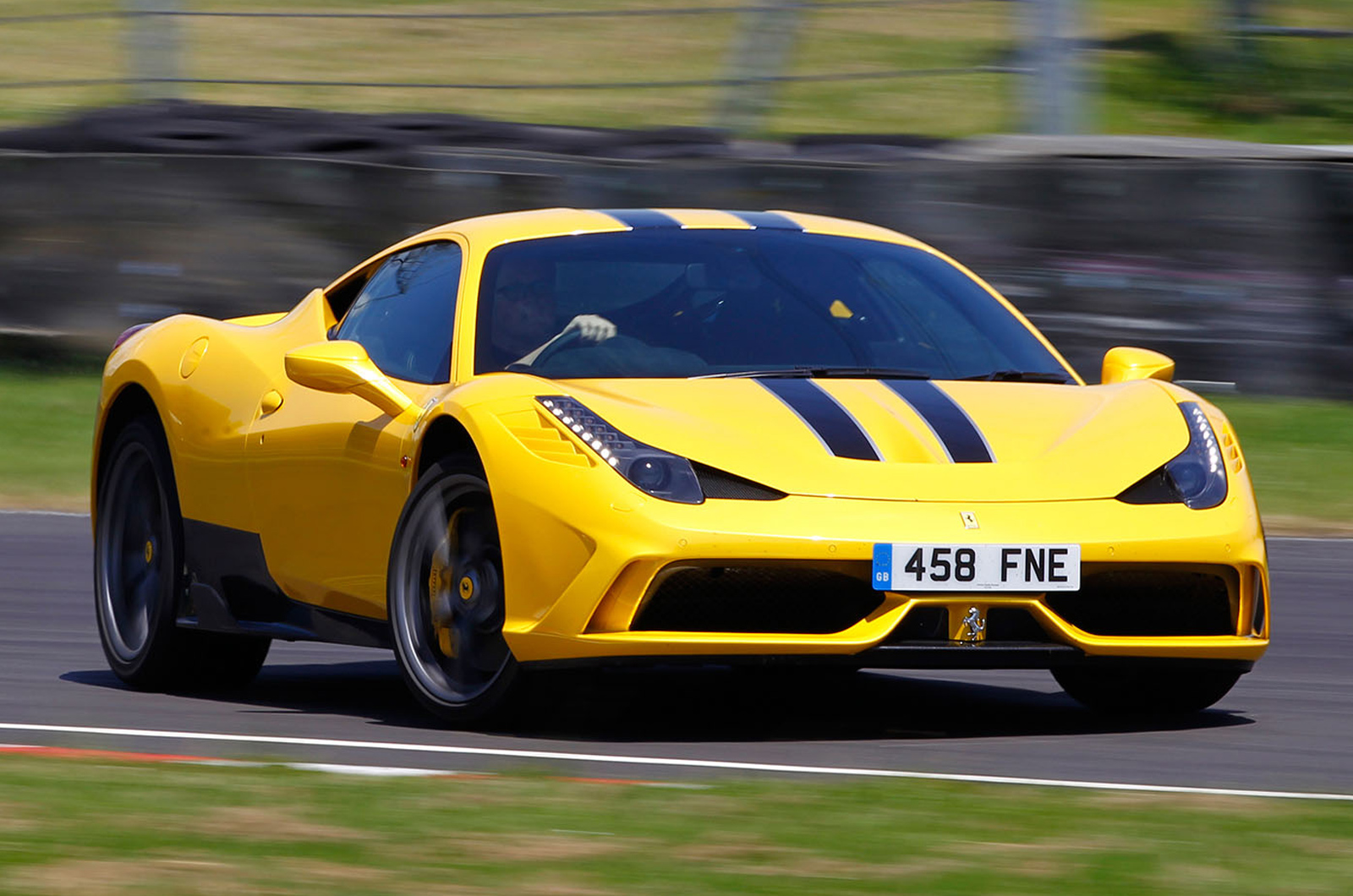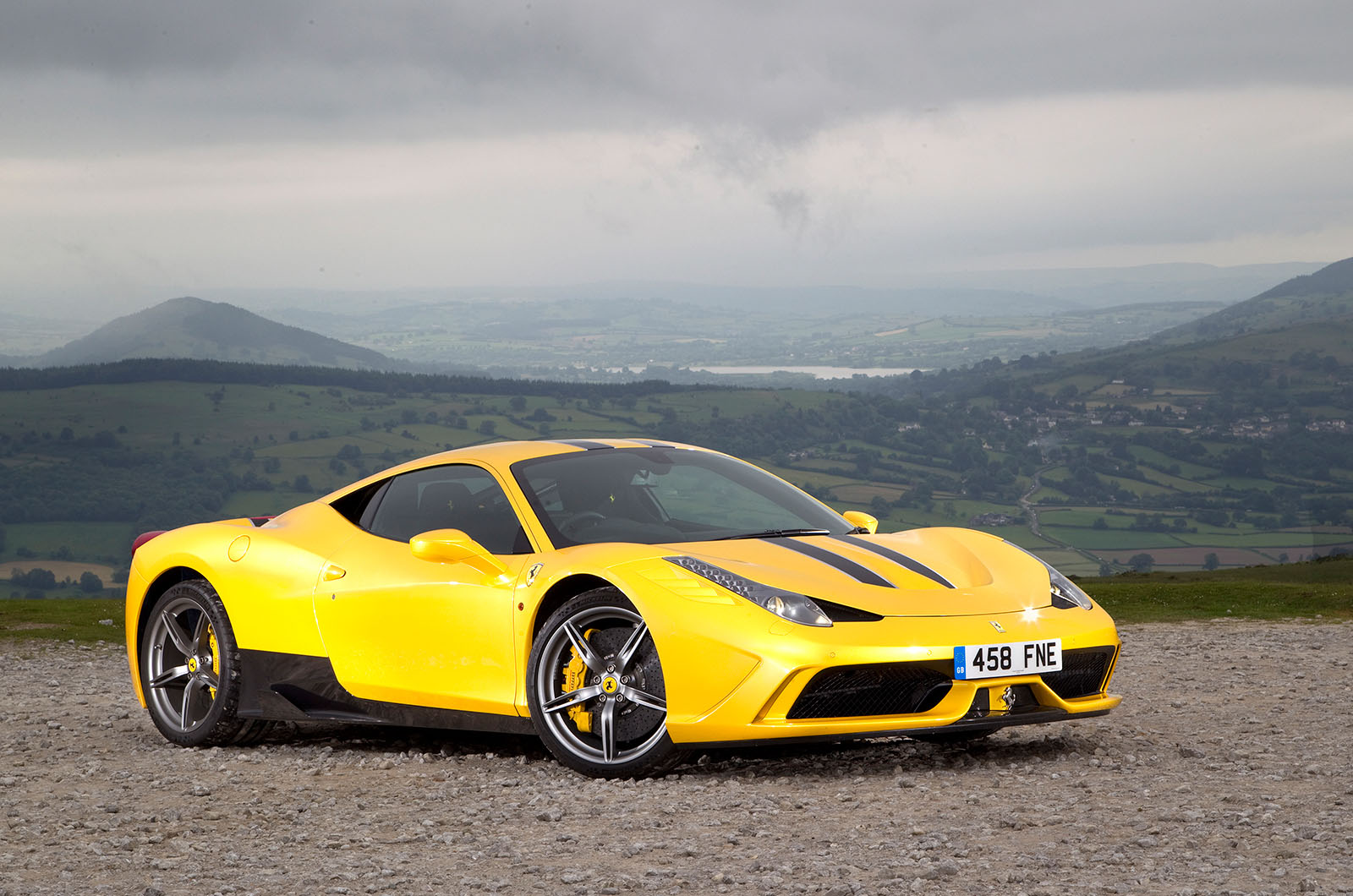Our test car didn’t do justice to the sparseness of the Speciale in standard form, on account of £1700 worth of optional Alcantara upholstery fitted.
So, take a long hard look at the pared-down cabin pictured here, and then imagine bare aluminium where the soft-touch cloth is on the wheelarch sections and around the centre console.
This is one of the most uncompromising cockpits that you’re ever likely to come across in an Italian exotic – and that’s exactly how it should be. There are open-topped lightweight sports cars and dedicated sprint machines more opulently appointed than this.
The seat shells and interior door panels are carbonfibre, and there are some wonderful examples of fresh detail design in the new interior door handles and the blade-like console of buttons for the transmission and launch control.
Ferrari’s purpose-driven redesign even takes in the seat fabric, which is lighter and more breathable than on a standard Italia.
You don’t get a glovebox in a 458 Speciale – in its place is a kneepad for your terrified passenger. The car’s peripheral control consoles to the right and left of the steering wheel have been cut down, because they could be: there’s no sat-nav or in-car entertainment, unless you pay to have them put back in.
Obviously, there’s no Bluetooth as standard, either, although you do get air-conditioned climate control.
What matters is that the driving position is excellent and the seats are comfy and quite wide but supportive, too. The steering wheel is as button-littered as ever, and the indicator, wiper and headlight controls are sited unintuitively – but your fingers and thumbs acclimatise before too long.
For just under £6000, you can fit your Speciale with a factory Ferrari Telemetry set-up, which is fully integrated with the car’s multimedia system. Our test car didn’t have it, so we can’t tell you how well it works. But we can tell you what it does.
Working through the satellite navigation system, the telemetry set-up will learn whichever circuit you’re driving on and, after a set of complete laps, can supply you with lap times, corner speeds, braking, acceleration and gearshift points onboard.
A virtual engineer function is alleged to analyse sector performance and “assist drivers in improving their track experience”. The data can also be exported to an iPad or laptop for more detailed analysis via a dedicated Ferrari Telemetry app.
Other track-day-suitable cost options you might complement your Speciale with include four-point harnesses (£2112), a roll bar (£2208) and exterior cameras for relaying and recording live video (£3360).


